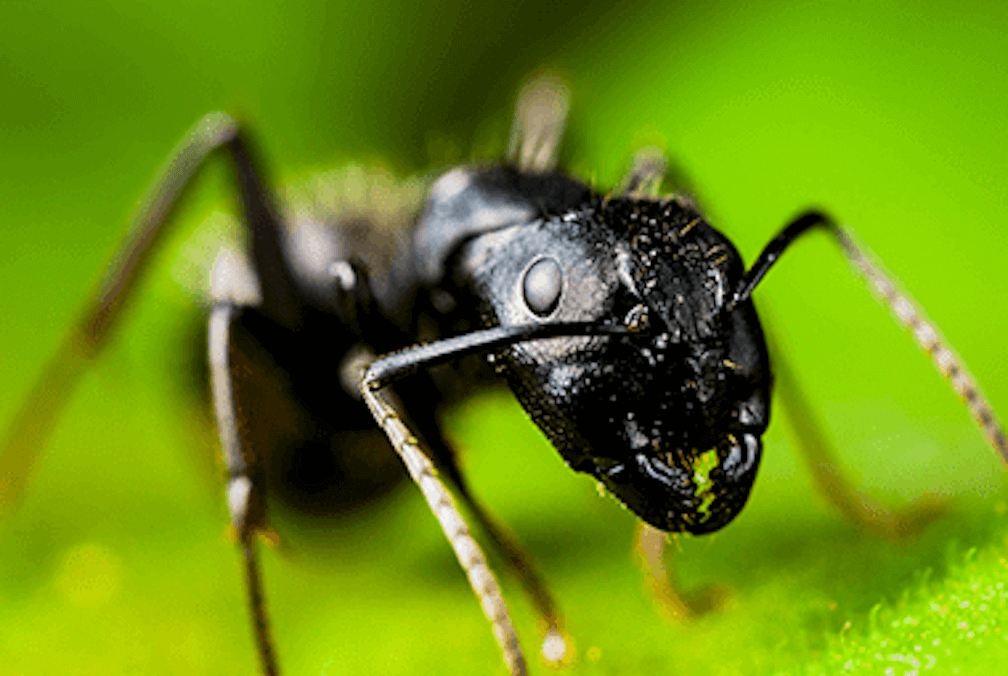You've probably heard that carpenter ants aren't as bad as termites. You may have even had someone tell you that termites are a multi-billion dollar problem, but carpenter ant damage in the U.S. is only in the hundreds of millions. While this is true, this is an insect threat you should never shrug off. If left untreated, carpenter ants can do a significant amount of damage to a home. Here's what you need to know.
Are Carpenter Ants Dangerous?:
Carpenter ants are extremely dangerous but not in the traditional way you might be thinking.
They've been known to occasionally bite humans and they do have extremely powerful jaws for their size. Once bitten you'll feel a pinch and then some minor irritation to the bite site.
That being said, carpenter ants are extremely dangerous when it comes to structural damage. Carpenter Ants whole life revolves around biting and chewing moist and soft wood, which if your home seems tasty to them, then they're going to put some damage in. Not only can this cause thousands of dollars in damages to your home or business, but it could potentially cause bodily harm if the structural damage is not taken care of and the building could collapse.
Do Carpenter Ants Cause Less Damage than Termites?
One of the biggest reasons carpenter ants don't do as much damage as subterranean termites is that carpenter ants aren't as secretive as termites. Since carpenter ants don't consume food, they have to do something with the wood waste they produce. This sawdust, also known as "frass", is pushed out of holes and accumulates on floors and walls. When this occurs, it alerts a property owner to the potential threat, and a professional is often called, which arrests the damage. But what happens when frass is deposited in a location that isn't easy to see or where it can blend in? The result is ongoing damage that can begin to look a lot like termite damage.
Carpenter ants prefer to feed on softwood or rotting timbers but they are known to move into sound wood. When they do, they can weaken support beams and cause a structure to warp, which is the same as termite damage.
Spotting carpenter ant damage is usually easier than spotting damage done by subterranean termites because…
- As mentioned above, carpenter ants produce frass. This frass is always found in areas where carpenter ants are doing damage.
- Subterranean termites die when they are exposed to the air too long. Carpenter ants have no such limitation. They can come out of their tunnels and crawl around all they want. When they do, they can create visible damage. This damage looks like someone took a carving knife to wood.
- Carpenter ant damage often starts in a location where wood has been damaged by water. This helps in tracking down carpenter ants a little easier than termites.
- Carpenter ants often target exterior wooden structures while attacking a home. You may be able to see damage at the base of fence posts, on the supports for your deck or patio, on wood borders for flower beds, and more.
What do Carpenter Ants Look Like?
Carpenter ant identification is key to preventing damage. Workers in a carpenter ant colony can be varied sizes. They are usually no more than ½ an inch. Swarmers can be a full inch in length. These are winged carpenter ants that are produced by a mature nest. Workers are black, dark red, yellowish, or a mixture. Their coloration is dependent on the species. If you see one of these ants crawling around inside your home, don't wait till you start seeing more. Call a professional immediately.
How To Prevent Carpenter Ants
Since carpenter ants are drawn to rotting wood, controlling moisture in your yard will go a long way toward making your home less interesting to carpenter ants.
- Address obstructed or broken gutters that allow water to run down the side of your home.
- Fix damaged spigots or leaky hoses.
- Loosen ground that is compacted, so that rainwater can't pool near your foundation walls.
- Trim trees or bushes to let sunlight into locations that get excessive shade.
It is also important to remove food sources in your yard:
- If you have wood borders for flower beds, a stone border is not only a great landscape idea, it can help to resist carpenter ants.
- Move firewood or construction material to at least 20 feet from foundation walls.
- Maintain a border of 2 feet between mulch and your foundation or consider replacing mulch with crushed stone.
When left untreated, carpenter ant damage can be significant. It is never a good idea to let an infestation go untreated. If you're seeing worker ants or swarmers in or around your property, and you live in our Missouri service area, reach out to Rottler Pest & Lawn Solutions to stop those wood-destroying pests in their tracks. Rottler has over 70 years of experience controlling invasive pests like the carpenter ant.


